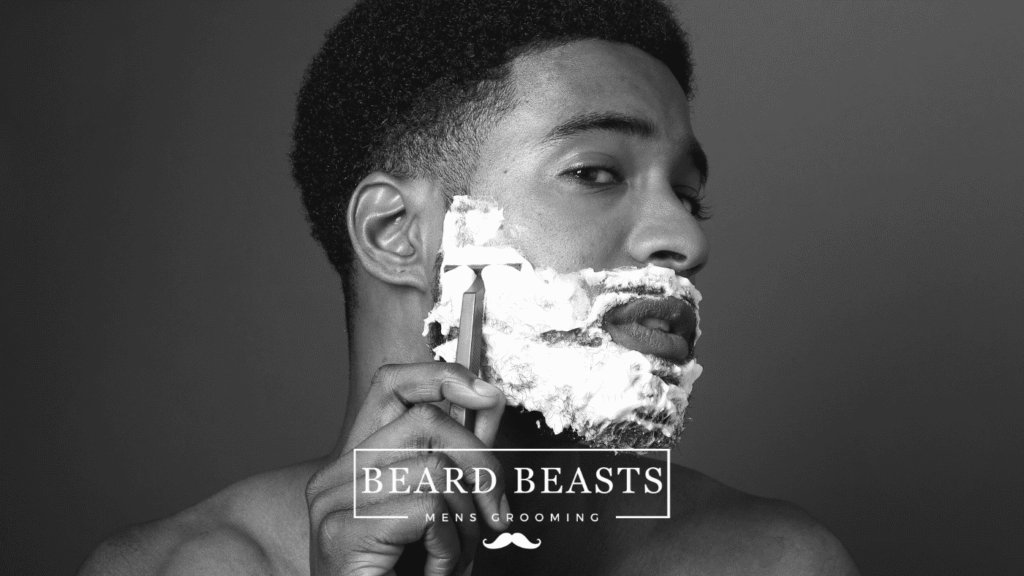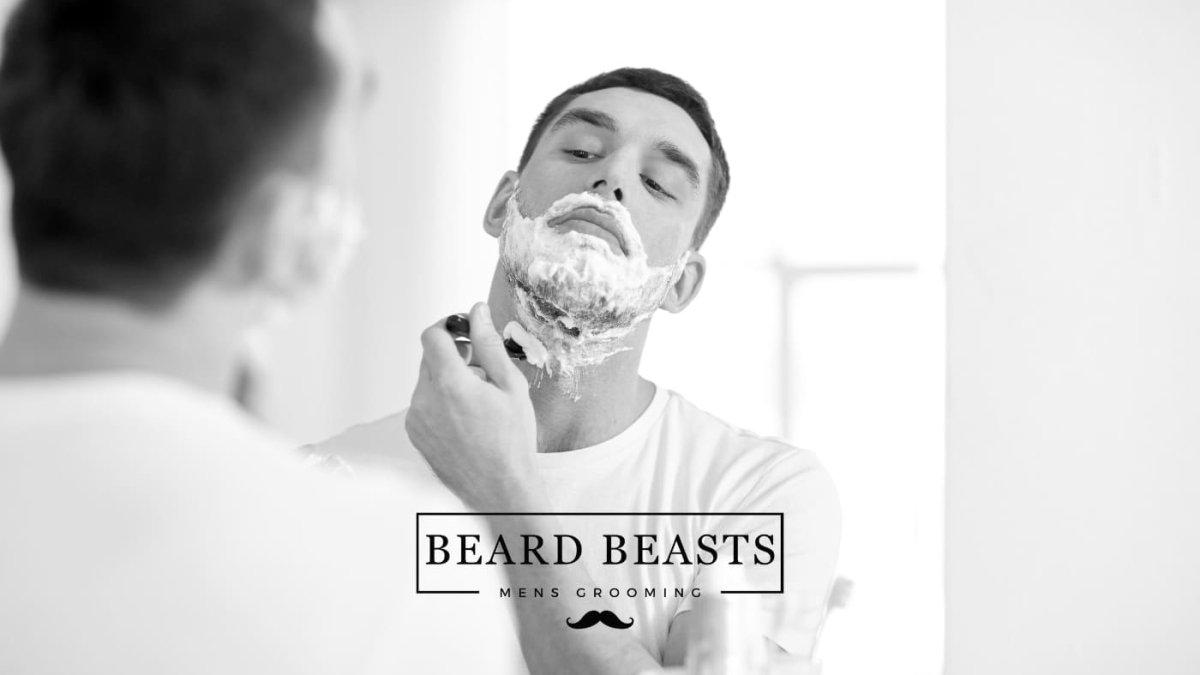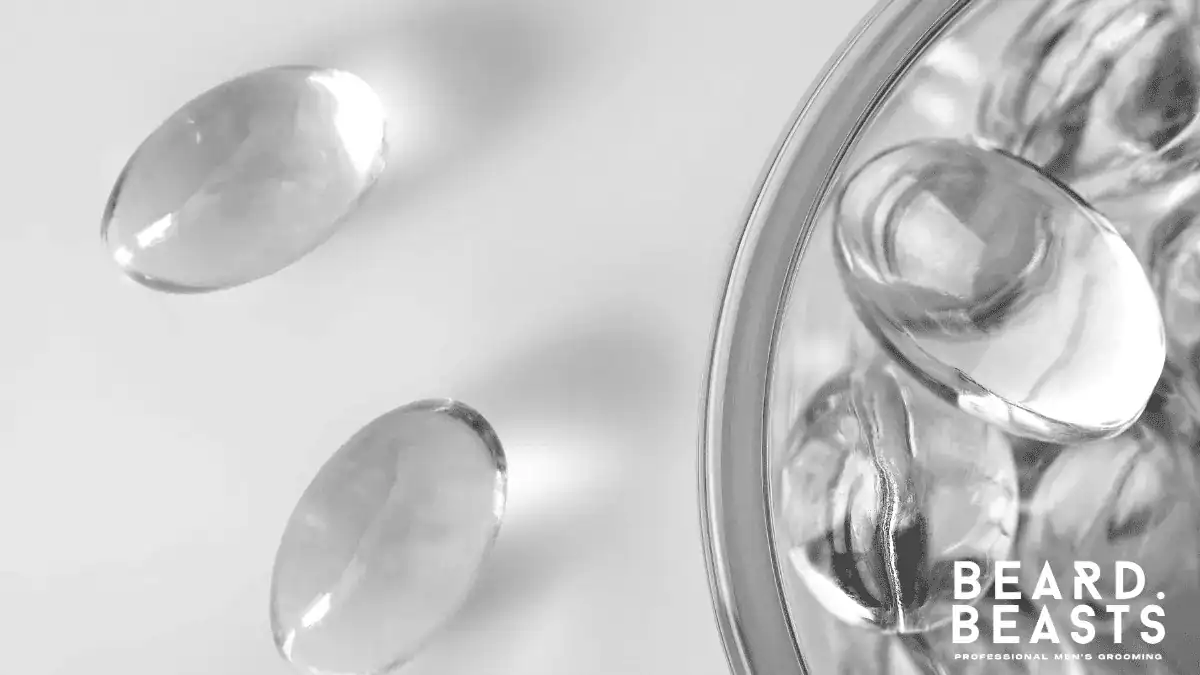Welcome to your ultimate guide on how to shave a beard, where we unlock the secrets to a flawless shaving experience. Whether you’re a novice aiming for your first clean shave or a seasoned pro looking to refine your technique, this guide is crafted for you. Shaving your beard is not just about removing hair; it’s an art that combines skill, proper tools, and the right care to achieve a smooth, comfortable shave that leaves your skin feeling refreshed and looking impeccable.
In this comprehensive article, we delve into essential steps, from the initial preparation of your skin and beard to selecting the best shaving tools for your needs. We also cover the intricacies of the shaving process itself, offering practical advice on techniques that minimize irritation and maximize smoothness. Post-shave care, an often overlooked aspect of the shaving routine, gets the attention it deserves, ensuring your skin remains healthy and soothed after the razor has done its work.
Moreover, we address common shaving challenges, providing solutions that help you overcome issues like razor burn, bumps, and ingrown hairs. With our step-by-step guide, product recommendations, and troubleshooting tips, you’ll be equipped to enhance your grooming routine, making shaving a more enjoyable and effective part of your daily regimen.
Join us as we explore the essentials on how to shave a beard, designed to improve your technique, protect your skin, and elevate your grooming game.
Why Proper Shaving Technique Matters
Mastering how to shave your beard is more than just a routine; it’s an art that benefits both your skin’s health and your overall look. Using the right shaving techniques ensures that you get a clean, close shave without causing irritation or harm to your skin. Let’s dive into why the way you shave truly makes a difference.

Skin Health:
A proper shaving technique can significantly reduce the risk of nicks, cuts, and razor burns, common issues that arise from improper shaving. By following the best practices for shaving, such as using a sharp razor and shaving with the grain, you protect your skin’s surface, preventing infections and promoting smoother skin. Additionally, proper preparation and aftercare, like hydrating your skin with quality shaving products, can prevent dryness and irritation, ensuring your skin remains healthy and resilient.
Aesthetic Outcomes:
There’s nothing quite like the confidence boost that comes from a perfectly groomed beard. Employing the right shaving techniques helps you achieve a more polished and professional appearance. Whether you’re going for a clean shave or shaping your beard, precision is key. Effective shaving practices allow for accurate lines and an even shave, leaving your beard looking its best. Plus, mastering these techniques can reduce the occurrence of ingrown hairs, ensuring your skin looks smooth and clear.
Efficiency and Comfort:
Knowing how to shave your beard correctly also means you can do it more efficiently, saving you time and discomfort. A good routine minimizes the need for multiple passes with the razor, reducing skin irritation and making your shaving experience more comfortable and enjoyable.
In conclusion, investing time in learning proper shaving techniques is not just about maintaining your beard; it’s about nurturing your skin’s health and enhancing your appearance.
By mastering how to shave a beard properly, you embrace practices that leave you looking sharp and feeling confident, ready to take on the day’s challenges.
Preparing Your Beard and Skin for Shaving
Before you learn how to shave a beard, it’s important to prep your skin and facial hair correctly. This initial step is key to enhancing your shave, ensuring your face is ready for a smoother, more comfortable experience with the razor. Let’s walk through the essentials of beard preparation for the perfect shave.
Warm Up Your Skin:
Starting with warm skin is crucial for a good shave. Warmth opens your pores and softens your hair follicles, making it easier for the razor to glide smoothly and reduce the risk of nicks and cuts. A simple way to warm up your skin is by soaking a towel in warm water and holding it against your face for a couple of minutes. Alternatively, you could shave right after a shower, taking advantage of the steam to naturally soften your beard and open up your pores.
Trimming Your Beard:
If your beard is on the longer side, it’s a smart move to trim it down before going in with a razor. A shorter beard means less work for your razor and a lower chance of tugging and pulling, which can irritate your skin. Use a beard trimmer with a guard to evenly reduce the length, making your shave easier and more effective.
Choosing the Right Pre-Shave Products:
The right pre-shave products can transform your shaving experience. Pre-shave oil is a game-changer for anyone looking to upgrade their routine. These oils prepare your skin by providing a protective layer that also nourishes and hydrates, reducing the chance of razor burn and irritation. Look for oils that contain natural ingredients like jojoba or argan oil, which are gentle on the skin.
Pre-shave washes or scrubs also play a crucial role in beard preparation. They help remove dead skin cells and any build-up, ensuring a clean surface for your razor to work with. A good scrub can also help lift beard hairs, making them easier to cut.
By incorporating these steps on how to shave a beard into your grooming routine, you’re not just getting your beard ready for a trim; you’re also making sure your skin is shielded, moisturized, and set up for the most effective shave. This preparation leads to a smoother cut, minimal irritation, and skin that looks healthier after the shave.
Selecting Your Shaving Tools
Choosing the right tools is crucial for learning how to shave a beard smoothly and without irritation. Every tool, from the type of razor to the shaving cream, is key in the beard shaving process. This guide will help you pick the best shaving tools tailored to your beard-shaving needs.
Understanding Different Types of Razors:
- Safety Razors: Known for their single blade that offers a close shave with less irritation. A Safety razor is cost-effective over time, as replacement blades are cheaper than cartridge blades. However, they require a bit of skill and patience to master.
- Cartridge Razors: These razors are user-friendly, featuring multiple blades and often a pivoting head that adjusts to the contours of your face. While they provide a quick and easy shave, the cost of replacement cartridges can add up, and the multiple blades may increase the risk of irritation for some skin types.
- Straight Razors: The traditional choice that offers the closest shave possible. A straight razor demands respect and is a learning curve but reward you with unparalleled precision. They’re ideal for enthusiasts willing to invest time in their shaving ritual. However, they’re not recommended for those in a hurry or inexperienced shavers.
Shaving Creams, Gels, and Foams:
Selecting the right product can enhance your shaving experience, providing lubrication and protection for your skin.
- Shaving Creams are rich and moisturizing, offering the best cushioning and lubrication, ideal for sensitive skin.
- Shaving Gels turn into a thick lather and provide a clear view of where you’re shaving, suitable for shaping and edging beards.
- Foams are easy to apply and convenient but may not offer as much protection and hydration as creams or gels.
Consider your skin type and preferences when choosing between these options. Look for products with natural ingredients to soothe and protect your skin.
The Role of the Shaving Brush:
Using a shaving brush can elevate your shaving routine significantly. A brush helps to exfoliate the skin and lift the hairs for a closer shave. It also creates a rich and warm lather from the shaving cream, evenly distributing the product across your beard. This process not only softens the hair but also enhances the skin’s protection during the shave. Brushes made from badger, boar, or synthetic fibers offer different experiences in terms of water retention, softness, and lathering capabilities.
By understanding the role and benefits of each shaving tool, you can tailor your shaving kit to suit your skin type, beard style, and personal preferences. The right combination of tools can turn shaving from a chore into a pleasurable ritual, leading to better skin health and a more enjoyable start to your day.
How To Shave A Beard: Step-by-Step Guide
Achieving a smooth, close shave is all about technique and preparation. Follow this step-by-step guide on how to shave a beard to enhance your shaving experience, reduce skin irritation, and get that perfect shave.
Pre-Shave Routine:
Start by cleansing your face with a mild facial cleanser to remove dirt and oil. Then, apply a pre-shave oil to soften the beard hair and protect your skin. This creates a slick surface that helps the razor glide more smoothly. Warm your skin with a hot towel or shave after showering to open pores and further soften the hair.
Mastering the Shaving Technique:
- Holding the Razor: Grip your razor firmly but without too much pressure. For safety and cartridge razors, a 30-degree angle is ideal for cutting hair efficiently. With straight razors, a 20 to 30-degree angle is recommended.
- Direction to Shave: Always start by shaving with the grain, which means shaving in the direction your hair grows. This minimizes irritation and the risk of ingrown hairs. If you seek a closer shave, you can go across the grain in a second pass, and only if your skin is not prone to irritation, carefully shave against the grain for the closest shave.
- Shaving Cream Application: Use a shaving brush to apply your shaving cream, working up a rich lather. The brush helps lift the hairs and evenly coat each one, preparing your skin for a smoother shave.
- Neck and Jawline: These areas require special attention as the hair can grow in different directions. Take your time and pay attention to the grain of your hair. Use short, gentle strokes and don’t press too hard. For the jawline, slightly open your mouth to tighten the skin, making it easier to shave.
- Under the Nose and Chin: Tilt your head back to stretch the skin under your chin, and use your nose to guide the razor around your nostrils. Be extra cautious and use the razor’s edge for precision.
After shaving, rinse your face with cold water to close the pores and apply an alcohol-free aftershave or moisturizer to soothe the skin. Remember, a great shave isn’t rushed. Take your time, and your skin will thank you for the extra care.
By following this step-by-step guide and mastering how to shave your beard, you’ll achieve not just a closer shave but also healthier-looking skin. Each step, from the pre-shave routine to navigating tricky areas, plays a crucial role in the outcome of your shave, ensuring a comfortable and effective shaving experience.
Aftercare: Soothing and Protecting Your Skin
Aftercare is a critical step when learning how to shave your beard, it is crucial for maintaining healthy, irritation-free skin. Following your shave, proper aftercare products can hydrate, soothe, and protect your skin, ensuring it looks and feels its best.
Post-Shave Products:
- Aftershaves are essential for calming the skin and reducing irritation. Look for alcohol-free formulas that soothe without drying out your skin. Ingredients like aloe vera, witch hazel, and essential oils can help to soothe and refresh the skin.
- Lotions and Balms provide moisture and protection after shaving. They can help to replenish any moisture lost during the shaving process, leaving your skin soft and hydrated. Balms, especially, are great for sensitive skin due to their soothing properties and lack of alcohol.
Dealing With Shaving Irritations:
- Razor Burn: To treat razor burn, apply a soothing lotion or balm liberally to the affected area. Avoid shaving the area again until it has fully healed to prevent further irritation.
- Bumps and Ingrown Hairs: Prevent ingrown beard hairs by using a gentle exfoliating scrub as part of your pre-shave routine to remove dead skin cells that can clog pores. If ingrown hairs do occur, apply a product designed to exfoliate the skin gently, such as those containing salicylic acid, to help release the trapped hair and heal the area.
Remember, the goal of aftercare is not only to treat any immediate discomfort but also to invest in the long-term health of your skin. By choosing the right aftercare products and dealing promptly with any irritations, you can ensure your skin remains smooth, clear, and ready for your next shave.
Proper aftercare is essential in learning how to shave a beard effectively, acting as the final step in today’s grooming and the preparatory stage for your next shave. By soothing and safeguarding your skin after shaving, you do more than just nurture your skin; you establish a base for improved, smoother shaves in the days to come.
Beard Maintenance and Grooming Between Shaves
Knowing how to shave a beard extends beyond the shave itself. Consistent maintenance is crucial for keeping your beard in top shape and your skin healthy. Follow these tips to ace your grooming routine between shaves.
Regular Beard Trimming:
Even if you’re growing your beard out, regular trimming is crucial. It helps maintain your desired shape and length, removing any split ends and keeping your beard looking neat. Use a beard trimmer with adjustable length settings to easily manage your beard’s length and shape. Remember, trimming your beard while it’s dry will give you a more accurate idea of how it looks since wet hair can appear longer.
Daily Beard Care:
- Beard Oils: Daily application of beard oil can significantly improve the look and feel of your beard. Beard oils condition your beard hair, making it softer and more manageable, while also moisturizing the skin underneath to prevent dryness and flaking. Look for oils with natural ingredients like argan, jojoba, or coconut oil for the best results.
- Beard Conditioners: Just like the hair on your head, your beard hair can benefit from conditioning. Beard conditioners help to soften and detangle hair, making your beard feel smoother and more comfortable. They can be especially beneficial after washing your beard to restore moisture.
In addition to these steps, remember to wash your beard regularly with a mild shampoo or a specialized beard wash to keep it clean and free of daily grime. Just be sure not to overwash, as this can strip natural oils and lead to dryness and irritation.
Investing time in daily beard care is key in learning how to shave a beard, ensuring it looks great and keeps your skin healthy. This routine leads to a softer, well-groomed beard that enhances your style.
Solving Common Shaving Problems
Shaving your beard can sometimes lead to issues like razor burn, bumps, ingrown hairs, and irritation. Here are some troubleshooting tips and answers to frequently asked questions that can help you learn how to shave a beard while overcoming these common shaving challenges.
Troubleshooting Tips:
- Razor Burn: If you experience razor burn, consider using a sharper blade, shaving less aggressively, and applying a soothing aftershave balm. Ensuring your skin is properly moisturized before and after shaving can also make a significant difference.
- Razor Bumps: Razor bumps are often caused by hair curling back into the skin. To prevent them, shave with the grain and avoid stretching the skin too tight while shaving. Applying a product containing salicylic acid can help reduce inflammation and free the trapped hairs.
- Ingrown Hairs: Exfoliate your skin regularly to remove dead skin cells that can trap hairs. If an ingrown hair occurs, avoid picking or squeezing it. Instead, use a warm compress to soften the area and gently exfoliate to encourage the hair to break through the skin.
- Dryness and Irritation: Use a hydrating shaving cream and follow up with a moisturizing aftershave lotion or balm. Look for products with natural soothing ingredients like aloe vera, chamomile, or tea tree oil.
FAQs:
- How often should I replace my razor blade?
Replace your blade or cartridge after every 5-7 shaves, or sooner if you notice it dragging on the skin or tugging hairs, as this can cause irritation. - Can I shave every day?
Yes, if your skin tolerates it well. However, if you experience irritation, consider shaving less frequently or adjusting your technique and products to better suit your skin’s needs. - What’s the best way to deal with sensitive skin?
Use a sharp, clean razor, shave with the grain, and apply minimal pressure. Choose shaving creams formulated for sensitive skin and avoid alcohol-based aftershaves, opting for soothing balms instead. - How can I achieve a closer shave?
Prep your skin with warm water, use a sharp razor, and apply a rich lather of shaving cream. Shave with the grain first, then carefully against it for closer results. Finish with a cold water rinse to close pores.
By understanding how to address these common shaving issues, you can improve your shaving experience and maintain healthier, smoother skin. Remember, mastering the right technique and using products tailored to your skin type and beard can make all the difference in how to shave a beard effectively.
Concluding How To Shave A Beard
Shaving your beard is an essential part of grooming that, when done correctly, not only enhances your appearance but also promotes skin health. By following the comprehensive guide we’ve outlined, from preparing your beard and skin for shaving to selecting the right tools and mastering shaving techniques, you can achieve a smooth, comfortable shave every time, mastering how to shave a beard effortlessly.
Key takeaways include the importance of warming up your skin and using pre-shave oils for preparation, understanding the pros and cons of different types of razors, and the benefits of using a shaving brush for even cream application. Remember, shaving with the grain, treating any irritations promptly, and maintaining your beard with regular trimming and daily care are crucial steps to avoid common shaving problems and keep your skin in top condition.
This article has equipped you with the knowledge and tips on how to shave a beard effectively, addressing common concerns and offering solutions to enhance your shaving routine. Whether you’re a beginner or looking to refine your technique, remember that patience, practice, and the right products are key to achieving the perfect shave.
Adopting a methodical approach to beard shaving and care not only ensures a better grooming experience but also contributes to a more polished, confident you. So, embrace these practices and enjoy the benefits of a well-maintained beard and healthy, irritation-free skin.





